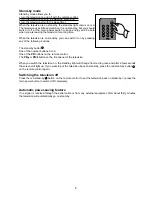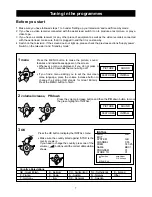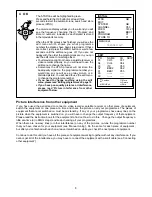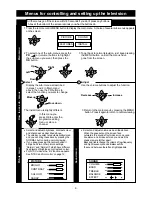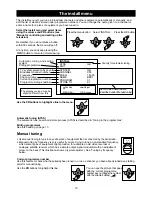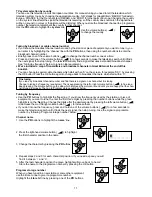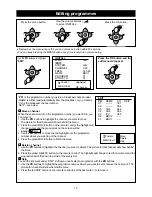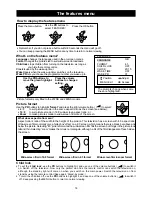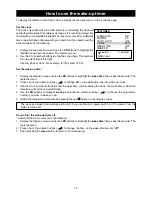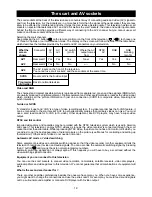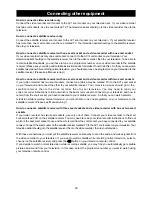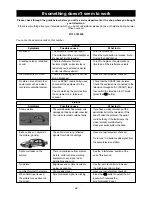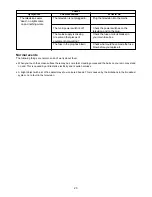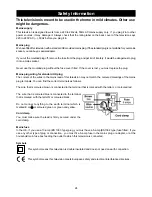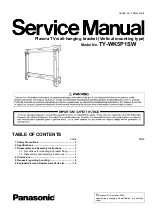
SVHS
Rear scart 2 is the S-video input
Programme Back to normal television
information
19
The scart sockets at the back of the television are a convenient way of connecting audio and video (AV) signals to
and from the television. As the signals are in a more basic form than the signal at the aerial socket, they are less
likely to be affected by interference and other things that can reduce picture quality. This television has two scart
sockets on special channels called AV1 and AV2. As well as the scart sockets, the video and audio input sockets
behind the front control flap provide a different way of connecting to the AV2 channel, but you cannot use scart
socket 2 and these sockets at the same time.
Selecting the scart channels
Keep pressing the AV button
b
b
on the remote control or on the front of the television (
/
b
b
) to choose one
of three AV options or normal television mode. The display on the screen will follow the order in the table below,
which describes the facilities provided by the scart and AV connectors on your television.
Video and RGB
The sharpest and clearest possible picture is reproduced from separate red, green and blue signals (RGB) which
are usually produced by digital equipment. Digital equipment and other equipment also produces the video signal
which contains all the picture information in just one connection (CVBS for composite video, blanking and
synchronisation).
S-video or S-VHS
'S' stands for 'super' and 'VHS' is a type of video recording system. If a video recorder has the S-VHS feature, it
can be connected to the scart socket AV2 to get better-quality pictures than ordinary videos can give. You must
use a scart lead made for S-VHS (or S-video). Other equipment, like DVD players, may have a super-video
output.
NTSC and tint control
Imported video discs and cassettes may be recorded with the NTSC television system which is used in America
and Japan. This television can play NTSC videos as long as the video recorder is connected through the scart
socket and not the aerial cable. While reproducing NTSC video, the picture menu has a tint control on it which you
can adjust to get the best appearance of natural colours on the picture (see 'Menus for controlling and setting up
the television'). Other kinds of video do not need a tint control.
Automatic AV mode or 'video' switching
Some equipment provides an automatic switching signal, so that the video recorder (or other equipment) tells the
television to reproduce its video and audio signals. You can over-ride the automatic switching signal by pressing
the AV button
b
b
until you get back to normal programme numbers.
Automatic switching signals do not always agree. If this happens you will have to buy a scart lead without the
video-switching signal connection.
Equipment you can connect to this television
You can use the scart sockets to connect video recorders, camcorders, satellite receivers, video disc players,
audio amplifiers and video games to this television. We cannot guarantee that all combinations of equipment will
work.
What is the second scart socket for ?
There are other possible combinations besides the ones we have given you. When you have some experience,
you might want to change the connections and use the extra socket. For example, you could feed sound signals
out to a surround-sound amplifier or connect a DVD player with S-video output.
The scart and AV sockets
What the Connector AV
AV AV switch Where the AV
NTSC
RGB
RGB
screen
in
out (pin 8) output comes AV
blanking
shows
from
(pin 16)
AV1
Rear scart 1 Yes
Yes Yes
Tuner
Yes
Yes
Yes
AV2
Rear scart 2 Yes
No No
-----
No
No
AV2
The AV inputs on the front of the television.
You cannot use scart socket 2 and these sockets at the same time.


